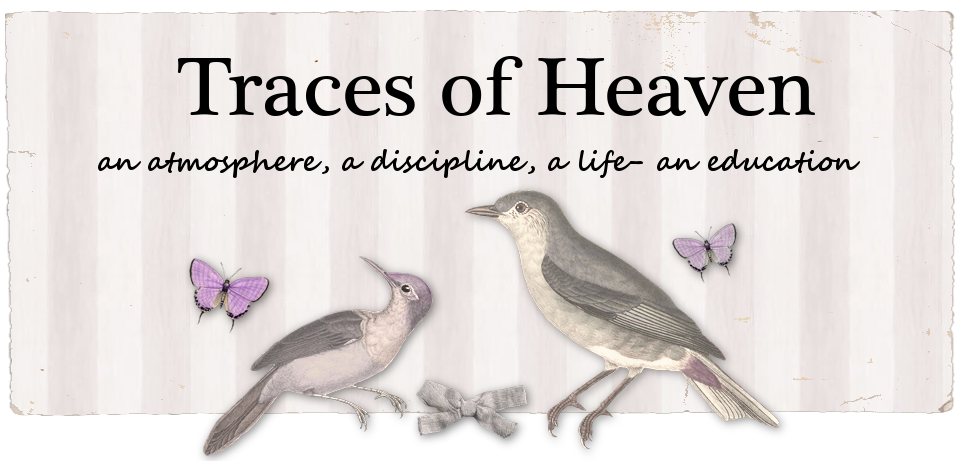I am going to keep the person who developed this anonymous until he asks me to do otherwise, but below is a portion of a paper on lectio divina he has written.
His advice is sound, and several of us have been using it for some time with great success in our homeschools. In our homeschool, we use these techniques in place of simple narration for our bible reading each day.
Please comment with any feedback after you try this with your children to let him know how it goes and what you would change.
Incorporating Lectio Divina and Contemplative Prayer into a Curriculum
Depending on the age and the time that one is able to dedicate to Lectio Divina, I would
recommend anywhere from 15 minutes to 45 minutes for one session. The first objection a person might raise is that children of any age are not able to spend lengthy time in silence, and this objection is very valid. Thus, to accommodate children, a variety of different adaptions should be used.
First, I have found that incorporating writing and journaling into Lectio Divina is very helpful.
The best way to do this is by having the students write their meditation. This can take from 5 to 10
minutes. The important thing is that students should be directed to write their meditation to Jesus as if he was present (mindful of mentioning that Jesus is, in fact, always present).
Second, incorporating opportunities for students to share what they have written and/ or
meditated on. What is important for this kind of tool is that teachers should avoid evaluating or analyzing what students share. In using this tool, I have never found a student who shared something erroneous, blasphemous, or something that might cause concern. If this happens, I would suggest that a teacher gently correct the error, but mindful that the goal is to foster in the student a dialogue with God. In offering feedback, the teacher should limit what they say to simple affirmations. The teacher should be mindful that often the most profound meditations are the simplest.
For example, a student might meditate on Jesus’ love for them. They might say that they imagine
Jesus telling them how much he loves them, and they in turn respond by telling him how much they love him. On the surface this may not seem interesting, but for prayer this can be huge. See the previous discussion on value of simplicity and the theological virtues. But I should also add a caution. Children are often very sensitive to adult’s expectations. The goal is simply to affirm when students are communicating with God (no matter how imperfect it may seem).
Also, a teacher should never force a student to share what they wrote.
A lesson using Lectio Divina might follow one of the following formats:
1) Extended Session (20-45 minutes)
a) Introduction, explanation, and lectio (10-15 minutes)
b) Meditation, students pick a word, phrase, or image and write a meditation (10 -25
minutes)
Afterwards, student can share what they wrote.
c) Contemplation (1-2 minutes, maybe more in some circumstances)
You can have either silence or classical music playing. Students should be
encouraged to “talk with Jesus about what they wrote.” Also, as to avoid distractions,
students should close their eyes.
d) Oratio (1 minute) The teacher can close with a brief spontaneous, vocal prayer and a
formal prayer with the students such as a Glory be, Hail Mary, or other appropriate
prayers.
2) Short session (5-10 minutes, to be used at the beginning or end of class)
a) Read the passage and have students pick a word, phrase or image (1-2 minutes).
b) Ask a couple of students to share what they picked (1-2 minutes)
c) Then a brief silence (1 minute) and then a vocal prayer to end (1 minute).
The short form could be used throughout the day as a focus activity to begin class.

No comments:
Post a Comment
Thank you so much for your comments! I look forward to hearing from you.